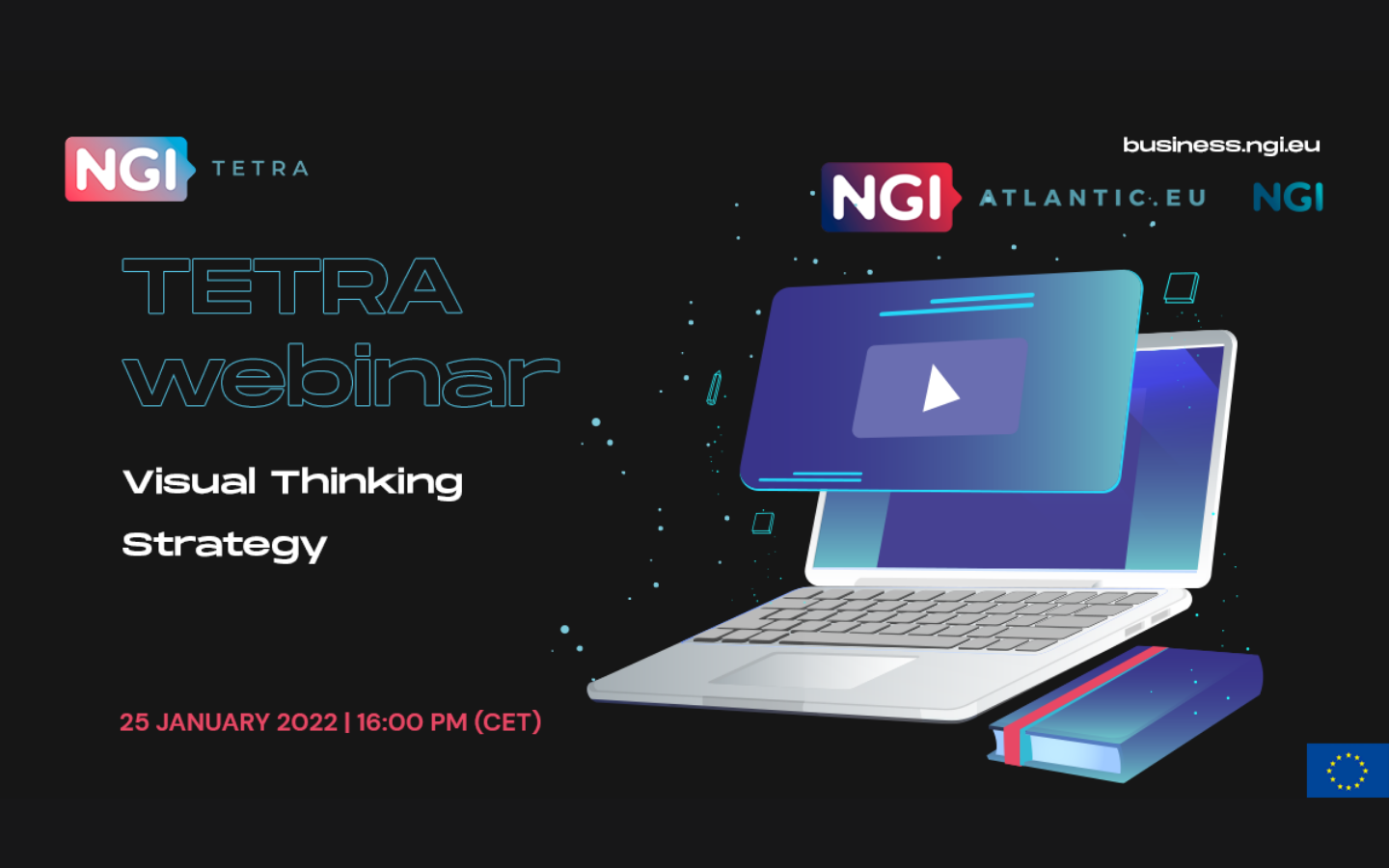Webinar: Visual Thinking Strategy
Webinar powered by TETRA and NGI Atlantic. (WATCH THE RECORDING BELOW)
The webinar focuses on identifying the product/service Unique Selling Proposition (USP) and works on a concept extracted from it, using modalities that are usually not explored (Visual Thinking Strategy). This is the best way to stretch the brain and give birth to new ideas, free of preconceived notions, that will be useful in business or elsewhere in life. Thinking visually and spatially helps tackle complex problems by seeing how interdependent pieces fit together.
What is the Visual Thinking Strategy (VTS)
Whether your brain thinks predominantly in words or in pictures, we all generate visual images to help us make sense of the world. Visual thinking allows us to organize ideas graphically. But extracting those ideas when we want to explore them further or discuss them with somebody else isn’t always easy. That’s where visual thinking strategies come in.
By applying visual thinking strategies to everyday situations, you can clarify your thoughts, organize and analyze important information, think more critically, and integrate new knowledge.
Visual Thinking Strategies (VTS) is a teaching method for improving critical thinking skills through discussions of visual images.
any thought or communication technique that uses a visual aid to help you round out an idea, learn something new, or create shared insight with others can be considered a visual thinking strategy.
Because the concept of visual thinking is driven by cognitive psychology and learning sciences, the applications for visual thinking-based strategies are widespread.
Visual thinking strategies are especially helpful for encouraging individual contributions in team brainstorming and problem-solving environments.
So this simplistic academic thinking strategy, when applied to a corporate setting, can drastically improve creative thinking skills and help employees facilitate discussions around the interconnectedness of ideas and innovation. It has also shown to be an excellent tool for breaking down creative or idea blocks in teams and helping discover alternatives thinking patterns and carve out new ideas.
The enormous demands on business today to stay competitive, needs creative thinking that is much more than “Thinking outside the box,” or brainstorming, or even just coming up with good ideas. Those are kind of one-dimensional or linear constructs. Creative thinking encompasses a more layered approach. The goal of VTS, similar to the goal of the popularized approach of Design Thinking, is to connect people with their creative side and have them generate their own really good solutions.
Strategies for Visual Learning
If you teach as part of a formal institution or in a business training capacity, you can use the Visual Thinking Strategies (VTS) methodology to encourage flexible thinking with the help of a single, interesting image and three simple questions:
- What’s going on in this picture?
- What do you see that makes you say that?
- What more can we find?
Much like a brainstorming session, the goal of a VTS discussion is to enable shared discovery, learning, and insight rather than to disseminate knowledge. Encouraging the contribution of individual ideas in this way has been shown to deepen the learner’s observation, collaboration, and communication skills in an international setting.

